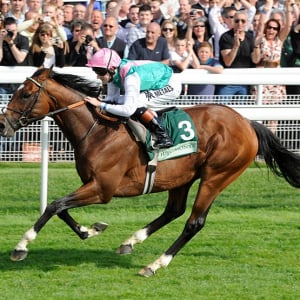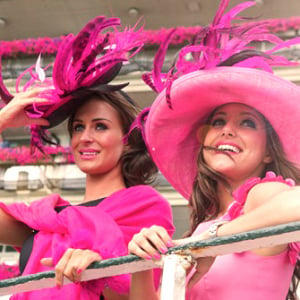York Ebor
The Ebor Festival at York has one of the richest histories of any UK Flat meeting, blending tradition with modern prestige.
📜 Origins and Early Development
-
The Knavesmire: York’s racecourse has been in use since 1731, after moving from Clifton Ings due to flooding. The vast expanse of the Knavesmire (a former execution site) allowed for bigger crowds and longer races.
-
The Ebor Handicap: First run in 1843, named after Eboracum (the Roman name for York). Originally over 2 miles, it was cut to its modern trip of about 1m 6f (1m5f188y) in 1968. It quickly became Britain’s richest and most competitive staying handicap.
🏇 Growth into a Festival
-
For most of its history, the Ebor was a standalone highlight, run in late August.
-
Over time, more feature races were clustered around it, evolving into a four-day festival by the late 20th century.
-
Today, the Ebor Festival (Wednesday–Saturday) is the northern equivalent of Royal Ascot or Glorious Goodwood, drawing the best horses, trainers, and global betting interest.
⭐ Key Races and Their Histories
1. Juddmonte International (Wednesday)
-
Inaugurated 1972 as the Benson & Hedges Gold Cup.
-
Past winners include Brigadier Gerard (1972), Dahlia (1974), Troy (1979), and more recently Frankel (2012).
-
Renamed with Juddmonte Farms’ sponsorship in 1989. Now one of Europe’s great 10f all-age tests.
2. Yorkshire Oaks (Thursday)
-
Dates back to 1849, originally a race for three-year-old fillies.
-
Opened to older mares in 1991.
-
Famous winners include Dunfermline (1977), User Friendly (1992), Enable (2017, 2019).
-
The race often crowns the season’s champion filly/mare over 12f.
3. Nunthorpe Stakes (Friday)
-
First staged 1922 as a weight-for-age sprint over 5f.
-
Became a Group 1 in 1984.
-
Unique as it is open to two-year-olds as well as older horses (rare at Group 1 level).
-
Iconic winners: Abernant (1949–50), Sharpo (1980–82 three-peat), Lochsong (1993), Battaash (2019–20).
4. Ebor Handicap (Saturday)
-
The anchor race since 1843.
-
Long known as the richest handicap in Europe; prize money rose to £1 million in 2019 (though adjusted since).
-
Winners often go on to become leading stayers or even Cup horses (e.g., Sea Pigeon, Mutual Regard).
-
Also doubles as a “win-and-you’re-in” ticket for the Melbourne Cup in recent years.
5. City of York Stakes
-
Established 1998, elevated through the ranks, and in 2025 became Britain’s only Group 1 race over 7f — now a major feature on Saturday.
🎭 Notable Moments
-
1951: Ebor Festival cancelled due to flooding on the Knavesmire.
-
1987: Attraction of major sponsors elevated its prestige.
-
2005: York staged the Royal Ascot at York (while Ascot was redeveloped), boosting its global profile.
-
2012: Frankel’s Juddmonte win became one of the highest-rated performances in racing history.
-
2019: The Ebor Handicap hit a record £1m purse, cementing its reputation as the ultimate staying handicap.
-
2025: The City of York Stakes became a Group 1, making the Festival home to four top-level races.
🧭 Place in the Racing Calendar
-
Held in late August, it closes the summer’s big racing season after Ascot, Newmarket’s July Meeting, and Goodwood.
-
Seen as flat racing’s last major carnival before Doncaster’s St Leger meeting in September.
-
It appeals both to purists (through its Group 1s and historic handicaps) and to the betting public (big fields, competitive racing).
📊 The Ebor Festival Today
-
4 days, 28 races, 4 Group 1s.
-
Prize money: regularly among the top three UK meetings outside Royal Ascot.
-
Audience: 80,000+ across the week, with strong Irish and international participation.
-
Reputation: Known as a “fair but fast” track, often producing form that translates directly to international races (Arc, Breeders’ Cup, Melbourne Cup).
✅ In short: the Ebor Festival has grown from a single great staying handicap in 1843 into a world-class four-day meeting, blending history (Ebor, Yorkshire Oaks) with modern global racing appeal (Juddmonte, Nunthorpe, City of York).
York Ebor Festival Hospitality Packages
- Display 30 Products per page



